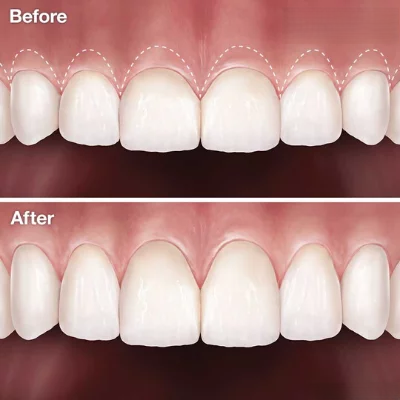
Healthy gums are the foundation of a healthy smile. Yet, many people overlook the importance of gum care until issues like bleeding gums, bad breath or tooth mobility occur. These are often signs of gum disease, also known as periodontal disease, which affects nearly half of adults over 30 worldwide.
If you’re experiencing gum-related issues or simply want to maintain your oral health, understanding periodontal treatment options is the first step
What Is Periodontal Disease?
Periodontal disease is a chronic inflammatory condition that affects the gums and supporting structures of the teeth. It starts as gingivitis, a mild form of gum disease and can progress to periodontitis, a more severe condition that can lead to tooth loss if left untreated.
According to the Studies , periodontitis occurs when plaque—a sticky film of bacteria—is not removed and begins to harden under the gumline, causing irritation and inflammation.
Common Symptoms of Gum Disease
Early detection is crucial. Look out for the following symptoms:
- Bleeding gums when brushing or flossing
- Swollen, red, or tender gums
- Persistent bad breath (halitosis)
- Receding gums or “long teeth” appearance
- Loose or shifting teeth
- Pain when chewing
If you experience any of these symptoms, it’s important to see a dental professional for an evaluation and treatment plan.
Causes and Risk Factors
Gum disease is primarily caused by poor oral hygiene, but other risk factors include:
- Smoking or tobacco use
- Diabetes
- Hormonal changes (e.g., pregnancy or menopause)
- Genetics
- Certain medications
- Stress
Improving your brushing and flossing habits can reduce your risk, but some cases require professional intervention.
Types of Periodontal and Gum Treatments
Modern dentistry offers a range of gum disease treatments, depending on the severity of the condition:
1. Scaling and Root Planing (Deep Cleaning)
This non-surgical procedure removes plaque and tartar from below the gumline and smooths the tooth roots to help gums reattach.
2. Antibiotic Therapy
Topical or oral antibiotics may be used to reduce harmful bacteria and inflammation.
3. Laser Gum Treatment
Minimally invasive lasers are used to target infected tissue and bacteria, reducing bleeding and promoting faster healing.
4. Flap Surgery
In advanced cases, the gums are lifted to clean deep pockets of bacteria and then stitched back in place for healing.
5. Bone or Tissue Grafts
Used when gum disease has caused significant bone or gum loss. These procedures help regenerate healthy tissues.
How to Prevent Gum Disease
Preventive care is key to avoiding periodontal disease. Follow these tips:
- Brush your teeth twice daily with fluoride toothpaste
- Floss daily to remove plaque between teeth
- Use an antimicrobial mouthwash
- Avoid smoking or tobacco products
- Visit your dentist regularly for check-ups and cleanings
- Maintain a healthy, balanced diet
How Dental Clinic Thomson Can Help
At Dental Clinic Thomson, we are committed to restoring and protecting your oral health through periodontal and gum treatments in Singapore. Our experienced dental team offers personalised care plans using diagnostic tools and minimally invasive techniques to effectively treat gum disease at every stage. Whether you’re managing early-stage gingivitis or advanced periodontitis, our clinic in Thomson, Singapore, provides safe, comfortable and evidence-based treatment tailored to your needs.
📅 Book an appointment today and take the first step towards a healthier, more confident smile!
📍 Visit Us: Dental Clinic Thomson
📞 Call Now: +65 66904691

